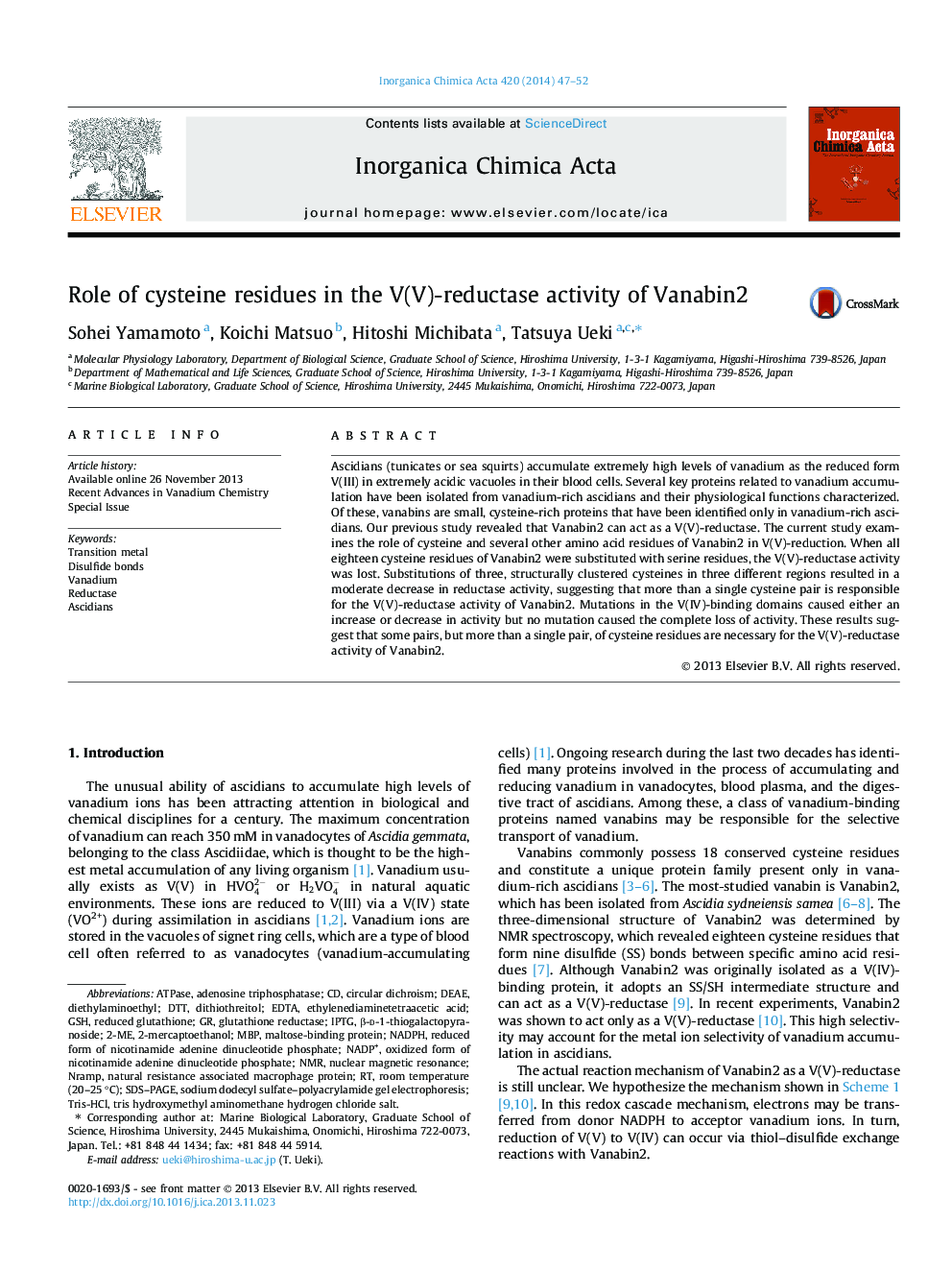| Article ID | Journal | Published Year | Pages | File Type |
|---|---|---|---|---|
| 1305536 | Inorganica Chimica Acta | 2014 | 6 Pages |
•We examined the role of cysteines in their the V(V)-reductase activity of Vanabin2.•When all eighteen cysteine residues were substituted, the activity was lost.•Substitutions of three sets of cysteines resulted in a moderate decrease.•More than a single cysteine pair is responsible for the V(V)-reductase activity.
Ascidians (tunicates or sea squirts) accumulate extremely high levels of vanadium as the reduced form V(III) in extremely acidic vacuoles in their blood cells. Several key proteins related to vanadium accumulation have been isolated from vanadium-rich ascidians and their physiological functions characterized. Of these, vanabins are small, cysteine-rich proteins that have been identified only in vanadium-rich ascidians. Our previous study revealed that Vanabin2 can act as a V(V)-reductase. The current study examines the role of cysteine and several other amino acid residues of Vanabin2 in V(V)-reduction. When all eighteen cysteine residues of Vanabin2 were substituted with serine residues, the V(V)-reductase activity was lost. Substitutions of three, structurally clustered cysteines in three different regions resulted in a moderate decrease in reductase activity, suggesting that more than a single cysteine pair is responsible for the V(V)-reductase activity of Vanabin2. Mutations in the V(IV)-binding domains caused either an increase or decrease in activity but no mutation caused the complete loss of activity. These results suggest that some pairs, but more than a single pair, of cysteine residues are necessary for the V(V)-reductase activity of Vanabin2.
Graphical abstractVanabin2 possesses nine cysteine pairs that make disulfide bonds. In the proposed reaction cascade, disulfide bonds are necessary for the V(V)-reductase activity of Vanabin2. In this study, we revealed that the reductase activity was lost when all eighteen cysteine residues were substituted into serines.Figure optionsDownload full-size imageDownload as PowerPoint slide
